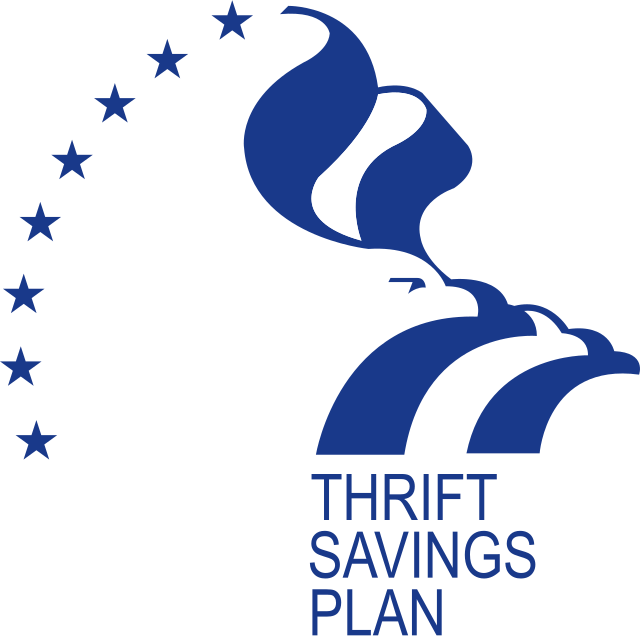
Are you seeking a retirement plan that offers tax advantages and low-cost investment options, such as mutual funds and IRAs? Some plans offer matching contributions and a mutual fund window for added flexibility. Look no further than the Thrift Savings Plan (TSP). This government-sponsored retirement savings plan, exclusively designed for federal employees like yourself, includes options for investing in mutual funds through the Thrift Savings Plan (TSP) and offers a mutual fund window for more investment choices. The Federal Retirement Thrift Investment Board manages the TSP and offers matching contributions to help grow your retirement savings. With its enticing benefits and secure management, the Thrift Savings Plan (TSP) is an excellent retirement income investment plan to help you build a comfortable future. TSP offers a range of mutual funds tailored to your financial goals and is especially advantageous for federal employees covered by the Federal Employees Retirement System (FERS).
The TSP program, offered by the government, allows federal employees to contribute towards their retirement through various funds, such as bonds and stocks, while managing investment fees. This program provides an alternative to the private sector for retirement planning. By taking advantage of the tax benefits offered by this government plan, you can maximize your contributions to the fund while minimizing your taxable income and investment fees. This plan is especially beneficial for those interested in investing in government bonds. Whether you are part of the Federal Employees Retirement System (FERS) or another federal retirement system, the Thrift Savings Plan (TSP) provides a reliable platform to grow your savings and invest in funds with low IRA investment fees.
We’ll explore how an IRA contribution can assist in securing your financial well-being during your golden years. So, let’s get started and uncover the key features of this remarkable IRA retirement system!
How the TSP Works & Investment Options
The Thrift Savings Plan (TSP) is a retirement savings plan available to federal employees, including those with an Individual Retirement Account (IRA). It allows employees to contribute a portion of their salary to an Individual Retirement Account (IRA) on a pre- or after-tax basis. Let’s look at how the TSP works and the investment options it offers, including the individual retirement account (IRA).
Employees’ Contributions and Investment Options
Employees can choose to contribute to the TSP through payroll deductions. They can decide whether they want to contribute on a pre-tax basis, which reduces their taxable income, or on an after-tax basis, known as Roth contributions.
Employees have several options within the TSP:
- Lifecycle Funds: These funds are designed for individuals who prefer a hands-off approach to investing. The lifecycle funds automatically adjust the asset allocation based on the employee’s target retirement date.
- Individual Funds: The TSP offers individual funds that allow employees to invest in specific asset classes such as government securities, corporate bonds, and stocks.
- Annuity Option: Besides the above investment options, employees nearing retirement age can also choose an annuity option. This provides them with a guaranteed stream of income during retirement.
Investment Fees and Considerations
It’s important for employees to be aware of any investment fees associated with their chosen investment options within the TSP. While these fees tend to be relatively low compared to other retirement plans, it’s still essential for individuals to understand how they may impact their overall returns.
When deciding which investment option is best, employees should consider their risk tolerance, time horizon until retirement, and financial goals. It’s recommended that individuals regularly review and rebalance their portfolios based on changes in market conditions or personal circumstances.
Benefits and Advantages of the TSP for Employees
The Thrift Savings Plan (TSP) offers numerous benefits and advantages to federal employees. Here are some key reasons employees should consider participating in this retirement savings plan.
Matching Contributions from Some Federal Agencies Increase Employee Savings
One major advantage of the TSP is that it allows employees to receive matching employer contributions. This means that if an employee contributes a certain percentage of their salary to the TSP, their employer will also contribute an equal amount, up to a specified limit. This “free money” can significantly boost an employee’s retirement savings.
Low Administrative Fees Compared to Private Sector Retirement Plans
Another benefit of the TSP is its low administrative fees compared to many private-sector retirement plans. The fees for managing the investments in a TSP account are generally lower than those associated with other retirement accounts. This allows employees to keep more of their hard-earned money working for them and less going towards administrative costs.
Portability Allows Employees to Keep Their TSP Account Even If They Change Jobs
The portability feature of the TSP is a significant advantage for federal employees who may change jobs throughout their careers. Unlike some private sector retirement plans, employees can keep their TSP account even if they switch federal agencies or leave government service altogether. This ensures that individuals can continue building on their retirement savings without interruption or starting over with a new plan.
Withdrawing Money from the TSP

Multiple Withdrawal Options Available
You have several options at your disposal. Whether you need a partial withdrawal or prefer to receive regular payments through an annuity, the TSP offers flexibility to meet your financial needs.
- Partial Withdrawals: If you find yourself in need of a specific amount of money, you can choose to make a partial withdrawal from your TSP account. This allows you to access some of your funds while keeping the remaining balance invested for potential growth.
- Annuities: Another option is to set up an annuity with the TSP. An annuity provides regular payments over a specified period or for life, ensuring a steady income stream during retirement.
Early Withdrawals and Penalties
It’s important to note that if you withdraw money from your TSP before reaching the age of 59½, penalties may be involved unless certain exceptions apply. These penalties are designed to discourage early withdrawals and encourage individuals to save for their retirement years.
Required Minimum Distributions (RMDs)
Once you reach the age of 72 (or 70½ if born before July 1, 1949), you will be required to start taking Required Minimum Distributions (RMDs) from your TSP account. RMDs ensure that individuals begin withdrawing a minimum amount each year from their retirement accounts based on their life expectancy.
When it comes time to withdraw money from your Thrift Savings Plan (TSP), remember that multiple options are available, including partial withdrawals and annuities. However, be aware of potential penalties for early withdrawals before age 59½ unless certain exceptions apply. Remember that once you reach age 72 (or 70½ if born before July 1, 1949), you must begin taking Required Minimum Distributions (RMDs) from your TSP account.
TSP General Mailing Address & Correspondence
Thrift Savings Plan (TSP) participants have a designated mailing address where they can send forms, requests, or inquiries. It’s important to use the correct mailing address to ensure that your correspondence reaches the TSP Service Office promptly.
Mailing Address for TSP Communications
When sending any correspondence to the TSP, include your account number. This helps the TSP accurately identify and process your request. The mailing address for general communications with the TSP is as follows:
Thrift Savings Plan
P.O. Box 385021
Birmingham, AL 35238
By using this specific mailing address, you can be confident that the appropriate department within the TSP will receive your forms and inquiries.
Online Services for Secure Communication
In addition to traditional mail, participants also have access to online services provided by the TSP. These services offer secure electronic communication with the TSP Service Office. By logging into their online account, participants can submit forms, update contact information, and inquire about their accounts without relying solely on postal mail.
Using online services provides convenience and ensures faster processing times for various requests or inquiries you may have regarding your Thrift Savings Plan.
To summarize:
- Participants should use the designated mailing address when sending forms or inquiries to the TSP.
- Including your account number in all correspondence is crucial.
- Online services are available for secure electronic communication with the TSP Service Office.
Remember, whether you choose traditional mail or online services, keeping in touch with the Thrift Savings Plan has never been easier!
What Happens to My TSP If I Quit My Job?
Options for Your Thrift Savings Plan (TSP)
So, you’ve decided to quit your job and now wonder what will happen to your Thrift Savings Plan (TSP). Well, you have a few options to consider.
Leave Funds in the TSP
One option is to leave your funds right where they are in the TSP. This can be a good choice if you’re happy with the investment options and fees associated with the TSP. By leaving your funds in the TSP, you can continue to benefit from any potential growth.
Roll Over into an IRA or Another Eligible Retirement Plan
Another option is to roll your TSP funds into an Individual Retirement Account (IRA) or another eligible retirement plan. This allows you more control over your investments and may provide additional flexibility.
Withdraw Funds Directly
If neither of the above options appeals to you, you can withdraw your funds directly from the TSP. However, it’s important to remember that tax implications and penalties may be associated with early withdrawals.
Different Rules Depending on Vested Agency Contributions and Length of Service
It’s worth noting that different rules apply depending on vested agency contributions and length of service. For example, if you have less than three years of service when you leave your job, you will not be entitled to any agency contributions. On the other hand, if you have at least three years of service but less than five, some agency contributions may be available.
Ultimately, deciding what happens to your TSP when quitting a job is up to you. Before choosing, consider investment preferences, future financial goals, and potential tax implications. It may also be beneficial to consult with a financial advisor who can provide personalized guidance based on your situation.
Additional Information on the TSP

The Thrift Savings Plan (TSP) offers additional features and resources to help you maximize your retirement savings. Let’s take a closer look at what else the TSP has to offer:
The Roth Option for Tax-Free Withdrawals
The Roth option is a great feature of the TSP, which allows participants to make after-tax contributions. This means you pay taxes on the money before it goes into your TSP account. The advantage? When you withdraw funds from your Roth account in retirement, those withdrawals are tax-free! It’s like having a secret stash of tax-free cash waiting for you when you retire.
Online Tools and Resources for Retirement Planning
Planning for retirement can be overwhelming, but the TSP has your back with various online tools and resources. On the official TSP website, you’ll find calculators that can help you estimate your retirement income based on different contribution amounts and investment strategies. Educational materials are also available to help you understand important concepts like asset allocation and diversification.
Flexibility to Change Contributions and Investments
Life is full of changes, and sometimes we must adjust our plans. With the TSP, you can change your contribution amount or investment allocation anytime. Whether you want to increase or decrease your contributions or switch up your investment strategy, it’s as easy as logging into your TSP account on their official website and making the necessary updates.
Maximizing Your Thrift Savings Plan
Congratulations on completing the sections before the conclusion! You now understand how the Thrift Savings Plan (TSP) works, its investment options, employee benefits, withdrawing money, and additional information. With this knowledge, you can take full advantage of your TSP and maximize your retirement savings.
Start by regularly contributing as much as you can to maximize your TSP. Remember that even small contributions can grow significantly over time. Please take advantage of any employer-matching contributions available; it’s like free money! Diversify your investments across different funds to spread risk and potentially increase returns. And don’t forget to periodically review and adjust your investment strategy based on your goals and market conditions.
Now that you have a solid grasp on maximizing your TSP, it’s time to implement that knowledge. Start by making a plan for your contributions and investment allocations. Set specific goals for what you want to achieve with your TSP, and create a timeline to track your progress. Remember, consistency is key.
FAQs
Can I contribute to my Thrift Savings Plan (TSP) if I’m self-employed?
Yes, if you’re self-employed or work for an organization that doesn’t offer a retirement plan like the TSP, you may be eligible for the TSP’s “catch-up” provision. This allows individuals aged 50 or older to make additional contributions beyond the regular limits.
What happens if I leave my federal job before retirement?
If you leave federal service before retirement age, you have several options for what you can do with your TSP account. You can leave it in place and continue managing it as-is, roll it over into an Individual Retirement Account (IRA), or transfer it into a new employer’s retirement plan if allowed.
Can I take a loan from my Thrift Savings Plan (TSP)?
You can borrow money from your TSP account through the TSP Loan Program. This allows you to take out a loan for specific purposes, such as purchasing a primary residence or paying for education expenses. However, it’s important to carefully consider the implications of taking a loan and ensure you have a plan to repay it.
Are there any fees associated with the Thrift Savings Plan (TSP)?
The TSP is known for its low fees compared to many other retirement savings options. The fees are typically based on a percentage of your account balance and cover administrative costs. Reviewing the TSP’s fee structure and understanding how it may impact your overall returns is important.
Can I contribute to my Thrift Savings Plan (TSP) and an Individual Retirement Account (IRA)?
Yes, you can contribute to both your TSP and an IRA simultaneously. However, certain limits exist on how much you can contribute each year to each account type. It’s essential to stay informed about these contribution limits and consult a financial advisor to ensure you maximize your retirement savings potential.










Leave a Reply